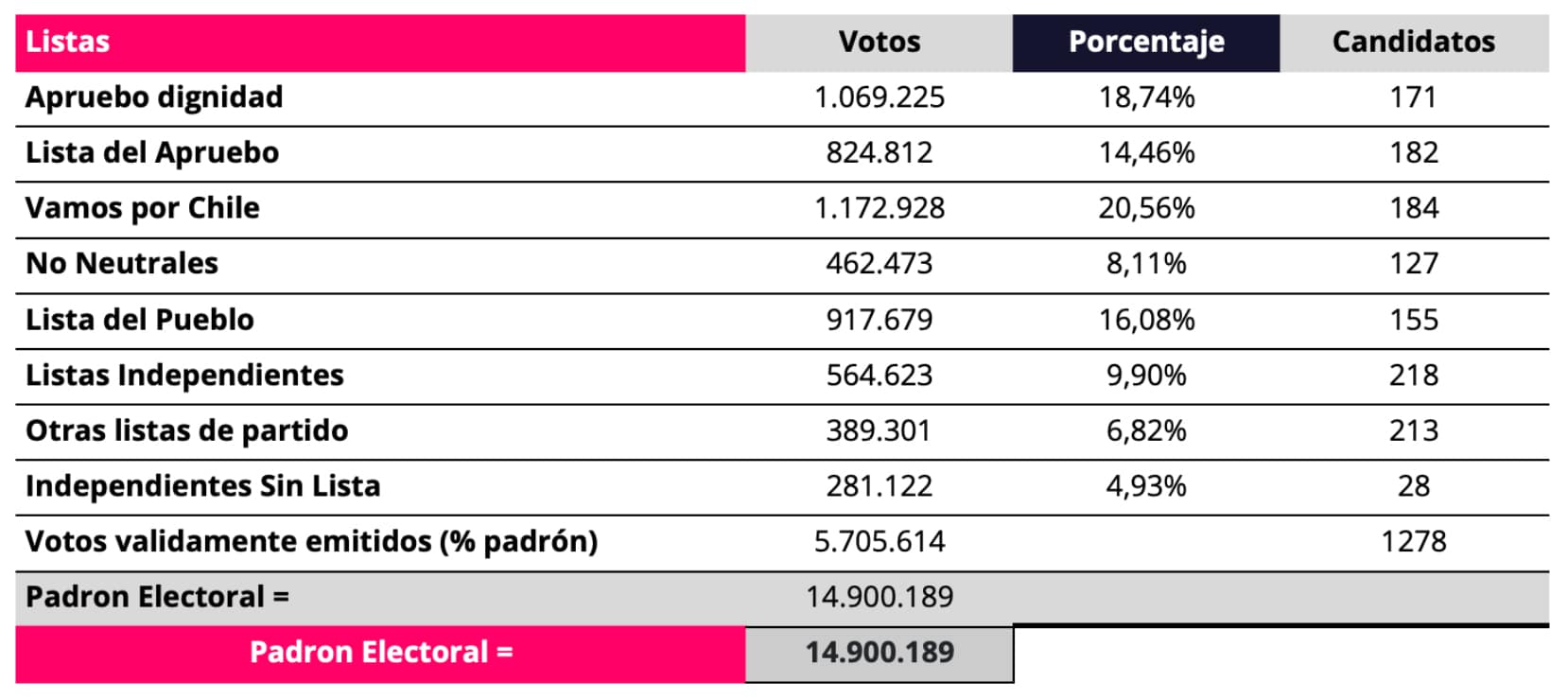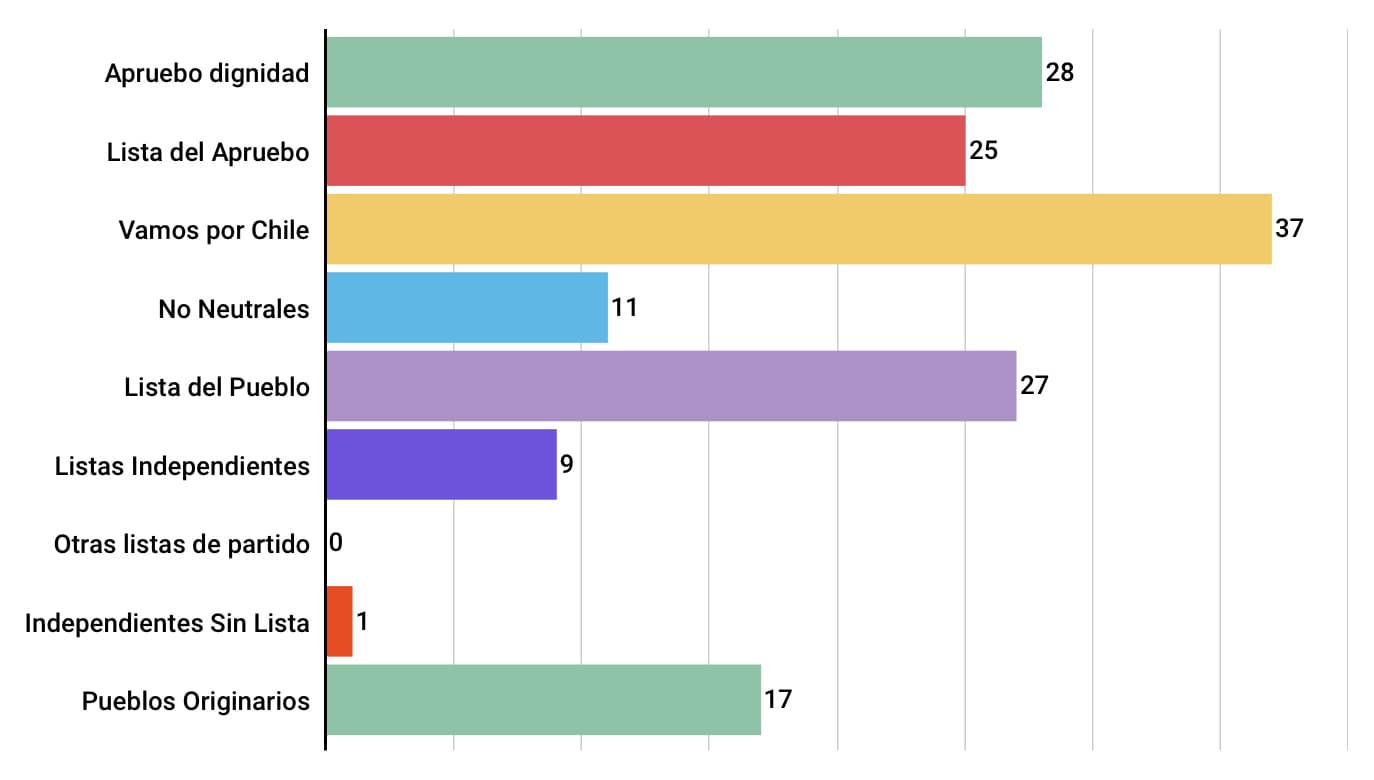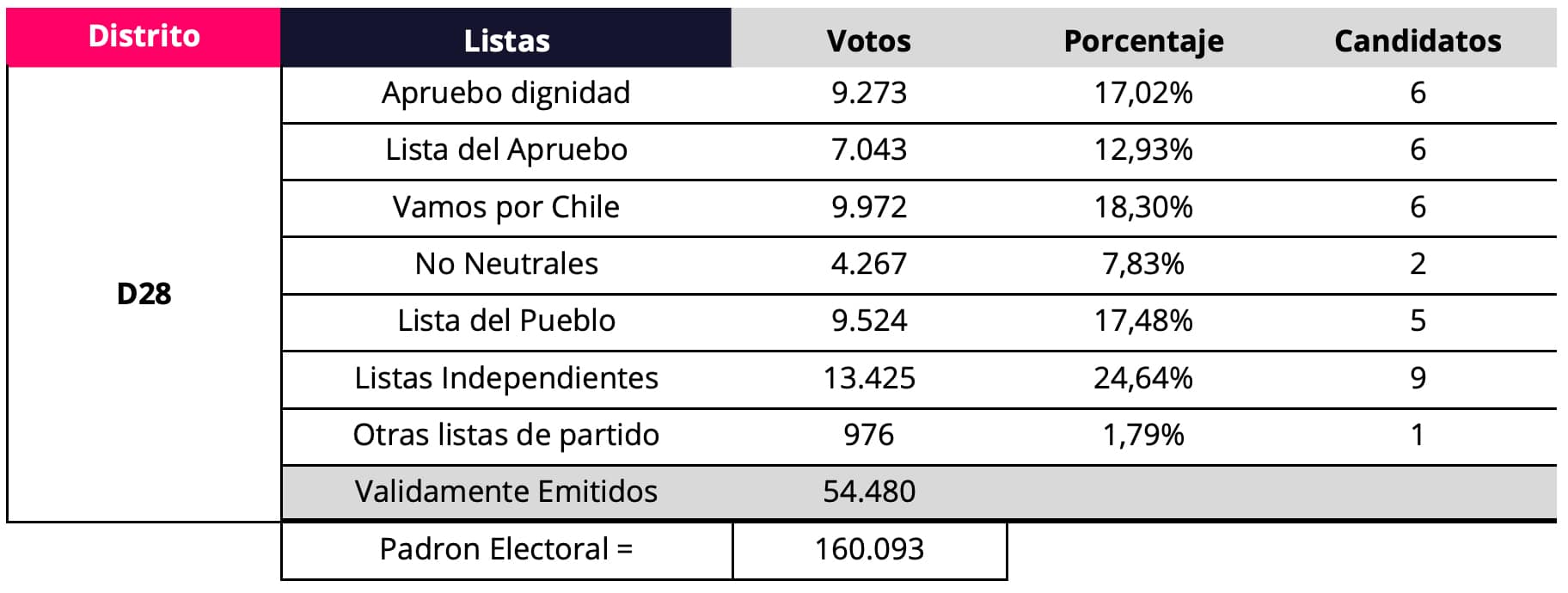With 43% of eligible citizens participating, according to the Chilean Electoral Service (Servel), the election turnout was not high, but it was high enough to begin to trace the outlines of a new political map of Chile. Undoubtedly, one of the major issues that mobilized a large part of the turnout was the vote for the constituent members of the Constitutional Convention, the body of citizens that as of June will have the mission of drafting a new Constitution for Chile.
The 155-member body comprises 88 independent candidates, which is to say 64% of the Convention’s total seats are occupied by independents. Moreover, setting aside the 17 seats reserved for indigenous peoples, only 50 of the elected constituents belong to a political party, which is less than one third. This clearly demonstrates the independents’ huge triumph in the latest elections.
An important fact, which perhaps underscores the independents’ great success in this process, is the severe crisis of representation suffered by the political parties. According to the latest CEP survey — published last April 29 — only 2% of Chileans trust any of the coalitions that have governed Chile in recent years (the conglomerates led by Michelle Bachelet and Sebastián Piñera), with all of them being questioned for their inability to introduce new and attractive political figures.
With respect to the elections for the newly created position of Regional Governor, only three candidates managed to win the office outright by securing the required 40% of the votes, with the regions of Valparaíso, Aysén and Magallanes now having an elected authority. The winners of the 13 remaining regions will not be known until June 13, which is the date set for the runoff election. Neither did the municipal elections (mayors and council people) lend themselves to triumphant acts, as the candidates from the political parties, especially those from the right-wing coalition, were heavily defeated. The trend was that generally unknown candidates with strong roots in community activism were able to catapult themselves into power.
Below are some of the key trends and data from the elections.
Constituent Convention
a) Overall results by ticket
Independents and people new to the world of traditional politics have become the leading group at the Constitutional Convention.

b) Distribution of political forces by seats
The Lista del Pueblo and the Independientes por una Constitución were the big surprise.

c) The vote and seats for the Indigenous Peoples
The new Constitution will also be written by the 17 representatives of Chile’s indigenous groups.

Election diaries
- The independents consolidated their position as the leading power, winning 88 of the 155 seats in the Palacio Pereira when drafting of the new Constitution begins.
- This is the first Constitutional Convention in the world having gender parity.
- The candidates for the 17 seats reserved for representatives of indigenous peoples were markedly linked to the conflict in the Southern Macrozone.
- The first session of the Constitutional Convention will be held in June, though a date has not yet been set.
What the international economic world is saying
- “None of the lists will control more than 25% of the 155 seats. Independent and left-wing groups will occupy more than 70% of the seats, but there is considerable diversity among them” (Goldman Sachs).
- “The actual text of the Constitution will take a number of months to be unveiled, which may lead traders to adopt a more cautious approach on Chilean assets after the knee-jerk reaction loses steam” (Bloomberg).
- “The punishment of traditional politics, diversity of the independents, and the far left over moderates suggest greater uncertainty for the future” (JP Morgan).
- “The markets were not dazzled by the result, as the ruling center-right coalition failed to win a third of the seats in the body that will draft the Constitution. Proposals will require a two-thirds majority to be included (…) The coming Constitutional Convention will be fragmented, a sign that in some areas considerable negotiation will be required.” (BNamericas).
To keep on your radar screen:
a) La Lista del Pueblo
- The pact became the fourth political force in the Constitutional Convention with 27 seats, i.e. 17.4%.
- They were shaped within the context of the massive social protests of October 2019 and beyond. They identify as leftists but are detached from political parties, including the Communist Party and the Frente Amplio, whom they were unwilling to associate with during the campaign.
- “We are the ones who have fought throughout history for dignity and justice. We are the ones who have lived through and grown up with inequity and inequality. We are the ones who rose up on October 18th to say enough is enough” (from their website).
- To be on the Lista del Pueblo, the candidates had to meet certain requirements, such as not having engaged in fraud, gender violence, mistreatment and sexual abuse. Among their ranks are lawyers, historians, engineers, and environmental activists.
- One of its most high-profile figures is Giovanna Grandon, better known as ‘Tía Pikachu‘ (Aunt Pikachú), who, in the midst of the social uprising, went viral while protesting in the costume of this character from the Japanese series. There is also Constanza San Juan, known for being the spokeswoman for the Guasco Alto Water Assembly and participating in the design and execution of the community’s communicational and legal strategy that led to the ruling that shut down the Pascua Lama mining project. Also on the list is María Magdalena Rivera, a defense lawyer for the “front line” protesters arrested during the protests, and who filed suit against President Sebastián Piñera for crimes against humanity in November 2019.
- After the election, its members have said they want to establish themselves as an independent coalition at the Constitutional Convention.
b) Independientes No Neutrales
- This is a non-militant center-left group that defines itself as “a diverse and broad-based group committed to public activism.”
- They work “in civil society organizations and academia, in fields ranging from culture, science, urban planning, communications and other social activities.”
- Under its aegis they were able to elect Benito Baranda, the former director of the Hogar de Cristo and current executive president of América Solidaria, who received 46,637 votes, the most by any non-party affiliated candidate.
- The ticket won 11 seats at the Convention, i.e. 7%.


